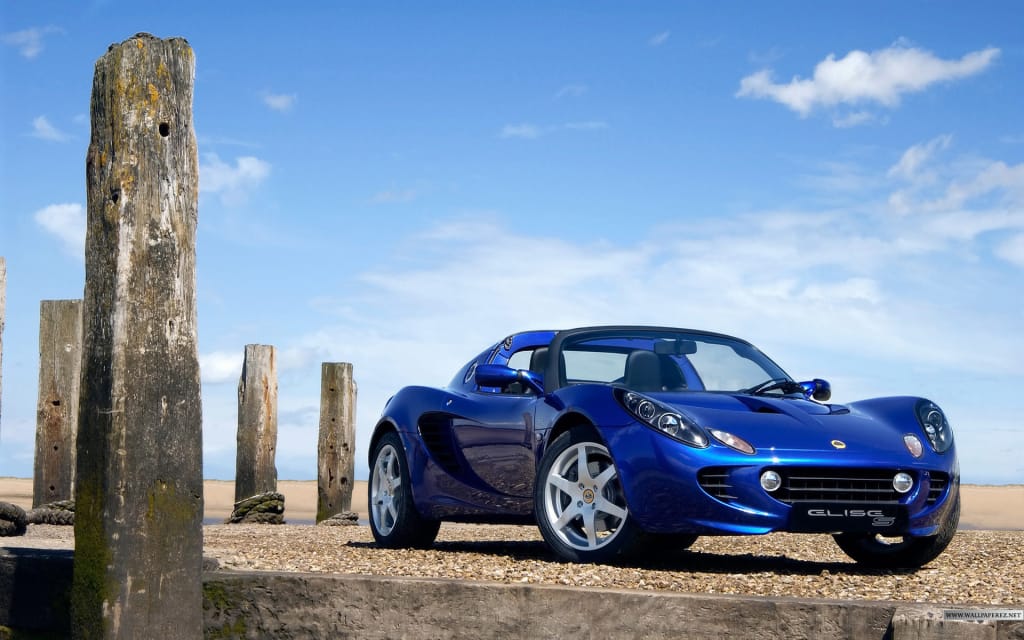Sports cars. With the exception of the real die-hard lentil sandal wearing environ-mentalists, most people love the idea of a sports car. But admit that at an Islington dinner party and it’s about as PC as claiming you’re Osama Bin Laden’s tennis partner. So can you really have a green sports car?

Arguably the greatest ever car designer was a chap called Colin Chapman who founded Lotus. His most famous quote on making fast cars was “Simplify and add lightness”. He also said “Any car which holds together for a whole race is too heavy”, but let’s not worry about that right now. Chapman believed that to make a car faster you make it lighter. If a car is lighter, then you need smaller brakes, a smaller engine, smaller tyres and so on to get the same level of performance. Which means the car is lighter still, creating a rather nice virtuous circle. You also save fuel costs, for example reducing the weight of a car by 100kg will save you about 900 litres of fuel over it’s lifetime*. That’s about £1,200 at today’s fuel prices. Then again you could also argue that by cutting down on the burgers and losing 10 kg, that would save you £120!
Chapman sadly died in 1982, but I suspect he’s turning in his grave as he sees how bloated and overweight cars have become. What’s frightening is the statistic that although the average weight of a car in Europe is around 1,200 kg, in the US it is 2,000 kg. In the last 25 years since his death, the average weight of cars has increased by 60% in some classes**. And cars on average are getting heavier by 16kg every year***.
Very interesting, but what relevance does this have to CO2 or that lovely sports car you want? Well, to get a car to any speed you need to add energy. 0.5 x the mass of the car x the speed**** (squared) to be exact. Halve the weight of the car, and you halve the energy needed, and halve the fuel required to get to that speed, and the amount of CO2 that gets produced as well.
The same is true with speed as well, except the amount of energy required is squared. So to get 100mph requires 4 times the energy to get to 50mph. Admittedly once you’re at speed, then the aerodynamics play more of a part in how much fuel is burnt (and CO2 that is produced), but lets concentrate on the weight for now.
The trouble with this kinetic energy is that when you slow down it’s changed into heat in the brakes, and it’s gone. This is where regenerative braking comes in. Hybrids and Electric cars can use their motors as generators and save this energy to use again. But they’re still thin on the ground, and unless you have £100,000 for a Tesla Roadster (www.teslamotors.com) you’re out of luck if you want a sports car.
So where does that leave us? Well, funnily enough where we started with Lotus. Generally 2 seater sports cars tend to weigh in between 1,200 and 1,500kg*****. A Lotus Elise in 1996 weighed just 720kg. Even now with airbags, safety equipment and crumple zones it weighs about 900kg. That means it needs a smaller engine, brakes and so on to give the same performance. And that also means less CO2.
As an example, a £140,000 Ferrari 430 will hit 60mph in 4 seconds and produce 420 g/km of CO2. A £32,000 Lotus Elise SC will hit 60 in 4.4 seconds and produce 202 g/km. Which is less than a bog standard Volvo estate.
So there you go. If you want to go green, but still want a sports car, then buy a Lotus.
* http://www.engineeringtalk.com/news/jsr/jsr103.html
** Source: SMMT
*** http://news.bbc.co.uk/1/hi/sci/tech/4922614.stm
**** Speed in metres per second
*****eg: Porsche 911 – 1,400kg, Ferrari 430 – 1,450kg, Porsche Boxster 1,420 kg, Honda S2000 1,274kg
Source: Clear research

